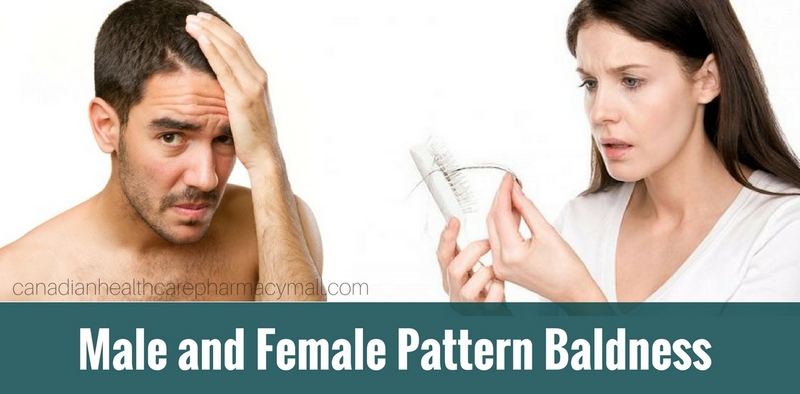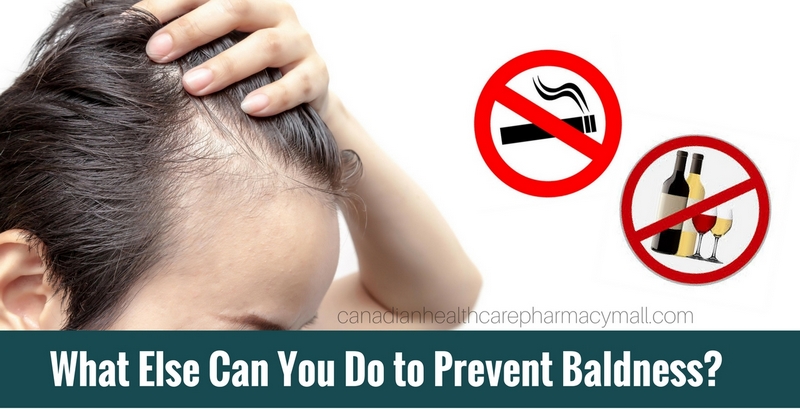Many people face a serious problem – uncontrolled hair loss on the head. According to statistical data, alopecia in various forms occurs in 70% of the male population. The disease affects only 25% of women. To successfully fight alopecia, it is necessary to determine its causes.
The exact mechanism of alopecia is unknown, despite the fact that the problem has been studied for a long time. Today, people believe that this disease is hereditary and predominantly occurs in people whose close relatives were also susceptible to some form of this pathology.

Causes of male pattern baldness
- Hormonal disorders. Some groups of biologically active substances, including testosterone, affect the functionality of hair follicles. Because of this, they become unable to provide full hair growth. Lack of nutrients leads to their death;
- Poisoning. Hair loss can be provoked by strong intoxication caused by a viral or bacterial infection, poisonous substances, drugs, mercury vapor. Also, alopecia can be caused by chemotherapy or radiotherapy (the treatment of cancer);
-
Emotional overstrain. Stressful situations have a very negative effect on the condition of hair follicles, making them more sensitive to other negative effects. Chronic overstrain, psychological trauma, the crisis periods of life may provoke hair loss –
they are becoming gray, and then fall out; - Autoimmune pathologies. In some diseases, for example, lupus erythematosus, sarcoidosis, dermatomyositis, amyloidosis, the immune reaction of the organism inhibits further hair growth. Similar disorders are also noted in Down’s syndrome;
- Violated integrity of the skin. Hair follicles are located in the tissues of the head. Because of this, various injuries caused by burns, radiation exposure are possible. Hair in the affected area permanently ceases to grow due to the replacement of follicles with a scar tissue that is unable to perform similar functions.
Thus, most cases of male baldness are associated with the effects of negative factors or diseases.
Causes of female pattern baldness
Female alopecia is much less common, but it is also considered a widespread and urgent problem.
Common causes of hair loss in women include:
- Side effects of drugs;
- Radiation impact;
- Reproductive disorders, hormonal failures;
- Postponed surgeries;
- Seborrheic dermatitis;
- Strict diets and starvation;
- Chronic stress;
- Disorders of the reproductive system.
In general, alopecia is a pathological hair loss, which is common among both men and women.
Treatment of male and female baldness

Modern medicine and cosmetology offer many methods of baldness treatment but not every method has a high efficiency. The effectiveness of the drug is an individual indicator and depends on many factors. Unfortunately, it is not always possible to cure baldness completely, especially when it comes to intense hair loss caused by congenital factors. However, using means against baldness women and men can slow the pathological process, strengthen hair follicles, creating the conditions necessary for the growth of new hair.
Drug treatment of alopecia
The only drugs for the treatment of hair loss are Minoxidil, Avodart (Dutasteride), and Propecia (Finasteride).
- Minoxidil for the treatment of baldness was discovered accidentally. This drug was widely used to treat high blood pressure, but the researchers found that one of the side effects was hair growth. Minoxidil lotion is applied to the scalp, which increases the flow of blood and nutrition to the hair follicles. But most experts believe that Minoxidil has little effect in the fight against hair loss. Treatment has a zero effect on the hormonal process of hair loss, and its benefits are temporary. Hair loss continues if you stop using the drug;
- Propecia (Finasteride) was used to treat benign prostatic hyperplasia. Finasteride inhibits type II 5-alpha-reductase enzyme, which is responsible for converting testosterone to DHT. The levels of DHT are reduced by 60% when taking the drug, which prevents the exposure of susceptible follicles to the hormone and returns them back to normal. This drug is very effective but, unfortunately, this treatment does not work for women. You can buy Propecia here at a low price;
- Avodart (Dutasteride) is also used for benign prostatic hyperplasia. Scientists have not approved the drug for the treatment of hair loss, but doctors sometimes prescribe dutasteride for male hair loss. Dutasteride works similarly to finasteride, but it can be more effective. Like finasteride, dutasteride inhibits the activity of type II 5-alpha-reductase. However, dutasteride further inhibits the enzyme type I. Blocking both types of enzymes reduces DHT and the risk of damaging the hair follicles. This drug works only if it is taken daily and can become less effective over time.
These treatments can slow or prevent further hair loss and stimulate the restoration of the follicles if they are still viable. However, they will not help the follicles that have already become inactive. Using them at an early stage of hair loss gives favorable results.
Hair transplantation
Hair transplantation involves taking follicles from the back of the head and transplanting them to bald areas. The surgeon will remove tiny skin plugs that contain several hairs, and implant plugs to the areas where the follicles are not active. About 15% of the hair appears from the follicle as a single hair, and 15% grow in groups of four or five hairs. At the end of the procedure, the person will have the same amount of hair – it will be evenly distributed around the head. Treating hair loss with a surgical procedure can be painful and costly. There is also the risk of scar formation and infection.
Low-level laser therapy
Low-level laser therapy is a form of light and heat treatment. It stimulates hair growth in both men and women. The researchers suggest that the main mechanisms involved in this process stimulate epidermal stem cells in the follicle and transfer follicles to the growth phase.
Researchers are trying to understand how to control the hair growth cycle. Instead of treating the symptoms of hair loss, scientists are trying to find a cause that can give fewer side effects. Recently, there have been many discoveries in the field of hair loss, which can lead to new promising methods of treatment.
Cosmetics for hair loss prevention
Today, there are many shampoos, food additives, and lotions that help strengthen hair and stop baldness. However, you should understand that such products will not be able to recover lost hair.
If a hair follicle is lost, no drug for topical application will return it to life. Shampoos from baldness can only prevent and cure the first signs of baldness. Some of the hair loss shampoos usually include additional proteins and nutrients that moisturize the hair and make it look stronger and healthier. Such substances prevent the action of 5α-dihydrotestosterone on the sensitive skin, thereby protecting the hair from falling out. Aloe vera and menthol soothe the irritated scalp and fight dandruff.
An important component of hair loss shampoos are antioxidants that neutralize free radicals. Adenosine stimulates hair growth. Natural ingredients improve hair condition and reduce their loss.
Some shampoos for baldness prevention include a borage oil and primrose oil. These are the ideal sources of omega-6 fatty acids. These substances have anti-inflammatory properties and saturate the skin with nutrients.
Other ways to treat baldness
Another way to fight hair loss is a wig. The technology of production and application of wigs and hairpieces has significantly improved in recent years.
You can hardly distinguish modern wigs from natural hair. They are a good option if you do not want to use medications and surgical interventions.
Beware of all the miraculous remedies advertised on television and in magazines. These products usually do not have any effect. Using them, you can lose not only your hair but also money.
Natural methods of alopecia treatment
In order to stop hair loss, you may use natural remedies for alopecia at home. With their help, you can treat and prevent alopecia. Before the therapy, it is necessary to exclude the presence of contraindications, consult with a specialist, read user reviews and look at the photos of application results.
Popular natural remedies for alopecia:
- Castor oil;
- Pepper tincture;
- Onions with honey;
- Egg with vodka;
- Mask with Calendula;
- Mustard mask;
- Olive oil.
General tips to prevent baldness

During the baldness therapy, the patient should review his lifestyle, reduce the impact of negative factors, cure concomitant diseases. Otherwise, drug therapy may prove ineffective, and alopecia will continue developing.
Concomitant therapeutic measures in the treatment of alopecia:
- Normalization of the regime of the day;
- Use of vitamins;
- Correct nutrition.
- Quitting bad habits;
- Reducing stress;
- A good sleep;
- Compliance with hygiene standards;
- Physical exercise.
- Physiotherapy procedures.
With the right and responsible approach to alopecia treatment, the patient has the ability to stop hair loss, accelerate its growth, and improve its condition.




